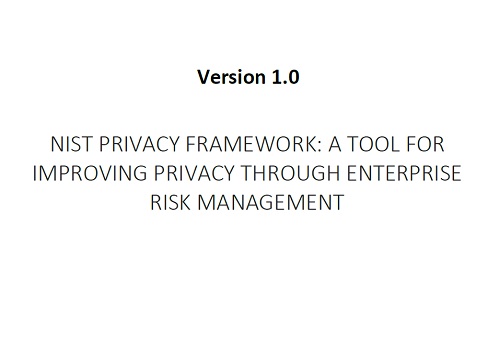REPORTS
Version 1.0 of the NIST Privacy Framework: A Tool for Improving Privacy through Enterprise Risk Management
For more than two decades, the Internet and associated information technologies have driven unprecedented innovation, economic value, and improvement in social services. Many of these benefits are fueled by data about individuals that flow through a complex ecosystem. As a result, individuals may not be able to understand the potential consequences for their privacy as they interact with systems, products, and services. At the same time, organizations may not realize the full extent of these consequences for individuals, for society, or for their enterprises, which can affect their brands, their bottom lines, and their future prospects for growth.
Following a transparent, consensus-based process including both private and public stakeholders to produce this voluntary tool, the National Institute of Standards and Technology (NIST) is publishing this Privacy Framework: A Tool for Improving Privacy through Enterprise Risk Management (Privacy Framework), to enable better privacy engineering practices that support privacy by design concepts and help organizations protect individuals’ privacy. The Privacy Framework can support organizations in:
- • Building customers’ trust by supporting ethical decision-making in product and service design or deployment that optimizes beneficial uses of data while minimizing adverse consequences for individuals’ privacy and society as a whole;
- Fulfilling current compliance obligations, as well as future-proofing products and services to meet these obligations in a changing technological and policy environment; and
- Facilitating communication about privacy practices with individuals, business partners, assessors, and regulators.
Deriving benefits from data while simultaneously managing risks to individuals’ privacy is not well-suited to one-size-fits-all solutions. Like building a house, where homeowners make layout and design choices while relying on a well-engineered foundation, privacy protection should allow for individual choices, as long as effective privacy risk mitigations are already engineered into products and services. The Privacy Framework—through a risk- and outcome-based approach—is flexible enough to address diverse privacy needs, enable more innovative and effective solutions that can lead to better outcomes for individuals and organizations, and stay current with technology trends, such as artificial intelligence and the Internet of Things.
The Privacy Framework follows the structure of the Framework for Improving Critical Infrastructure Cybersecurity (Cybersecurity Framework) to facilitate the use of both frameworks together. Like the Cybersecurity Framework, the Privacy Framework is composed of three parts: Core, Profiles, and Implementation Tiers. Each component reinforces privacy risk management through the connection between business and mission drivers, organizational roles and responsibilities, and privacy protection activities.
- The Core enables a dialogue—from the executive level to the implementation/operations level—about important privacy protection activities and desired outcomes.
- Profiles enable the prioritization of the outcomes and activities that best meet organizational privacy values, mission or business needs, and risks.
- Implementation Tiers support decision-making and communication about the sufficiency of organizational processes and resources to manage privacy risk.
In summary, the Privacy Framework is intended to help organizations build better privacy foundations by bringing privacy risk into parity with their broader enterprise risk portfolio.
SHARE:






